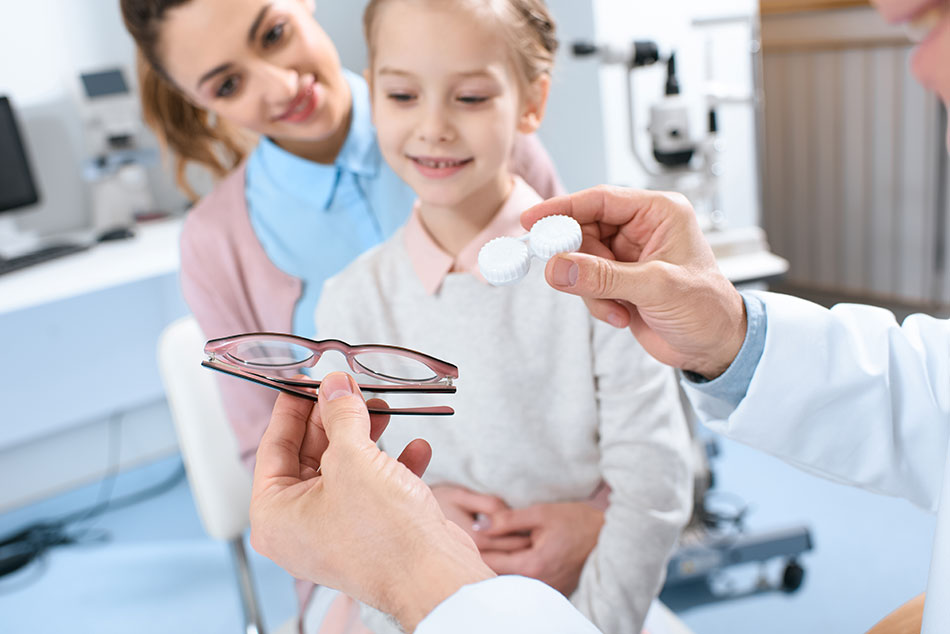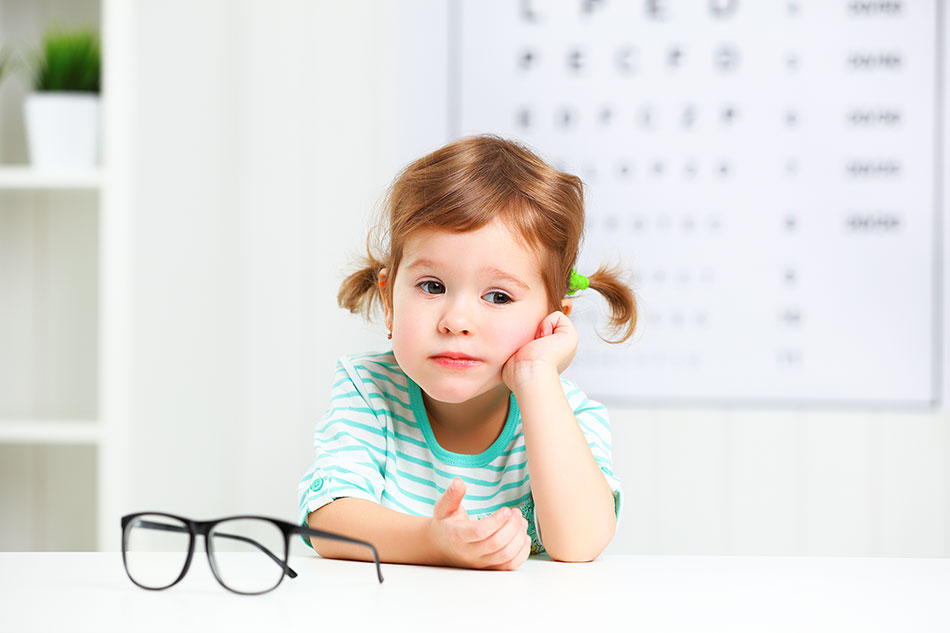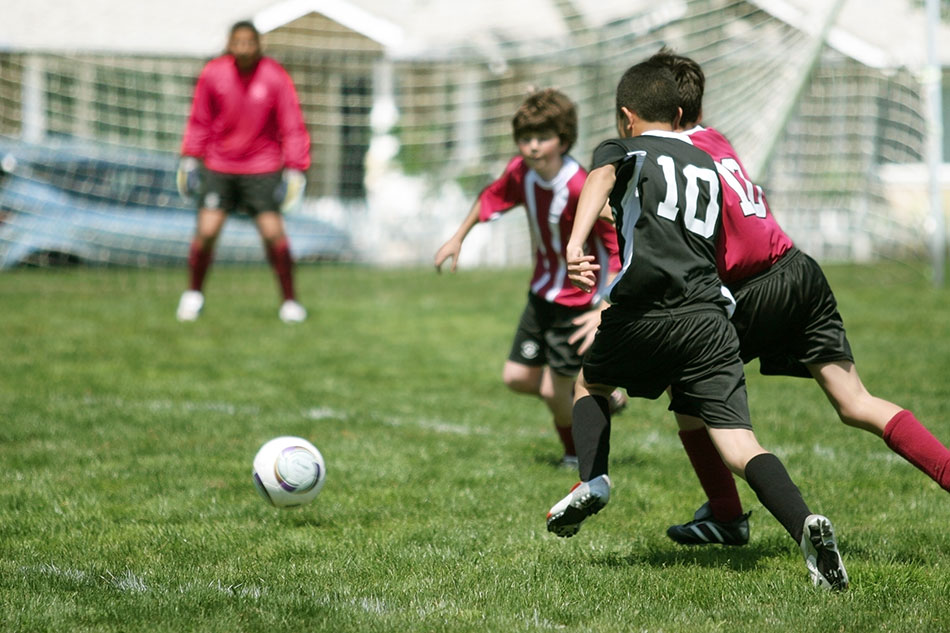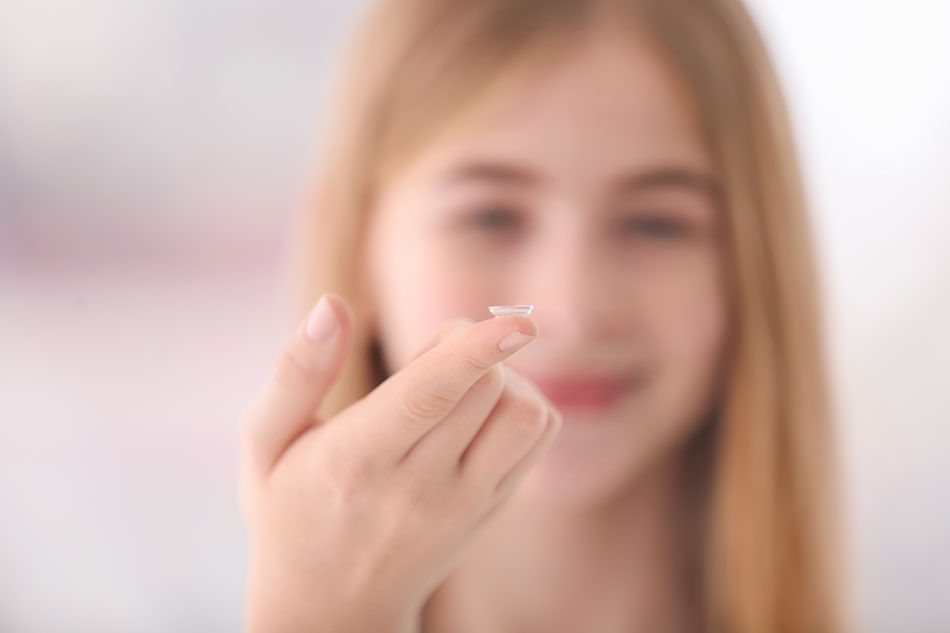Everything You Need to Know Before Getting Contacts for Kids

Your child may be showing an interest in wearing contact lenses. But you may think he or she is too young or immature to handle them.
Contacts lenses are not just for grown-ups. Over half of all optometrists believe it's acceptable for children between ages 10 and 12 to wear soft contact lenses.
More children than ever are discovering the freedom and self-esteem boost that contact lenses can give them. Will yours?
Here's everything you need to know about contacts for kids and if they're right for your child.
Is My Child Too Young for Contacts?

How young is too young for contacts? There’s really no concrete answer to this question because every child is different. Whether or not a child can wear contacts depends not so much on age, but on maturity and responsibility.
When it comes to deciding if your child should get contact lenses, ask yourself:
- Does my child show initiative when taking care of themselves, household chores or the family pet?
- Can my child follow simple instructions?
- Does my child practice good hygiene habits without reminders?
If you can honestly answer yes to these questions, your child may be ready to wear contact lenses. If he or she needs to be constantly reminded about personal hygiene and responsibilities, then it may be best to wait.
Most older children have no problems inserting or removing their lenses. A study involving contact wearers aged 8 to 11, reported 90% of them rarely had problems handling their lenses.
Many parents mistakenly think that children can't wear contacts because their eyes are still growing. However, they can comfortably wear contact lenses. Annual eye exams will ensure they're always wearing the proper prescription for their vision and adjust for growing eyes.
Kids' eyes are usually well lubricated naturally. So they don't normally suffer from dry eye syndrome as often as adults do. This makes them good candidates for contact lenses.
Contacts Are Great for Kids Who Play Sports

For responsible children who also play sports, you may strongly consider having them fitted for contact lenses. Contacts offer several advantages over glasses for an athletic and active kid. They are, overall, a much safer option.
Eyeglasses can be easily knocked off or broken during physical activity by another player or a ball. They can break too if the wearer has an accident and falls. Glasses can also move around on the nose or fall off when your child is active.
Unlike glasses. contacts don't cover peripheral vision. This limits the corrected vision to the size of the lenses. Protective eyewear can also feel awkward, as many safety glasses aren't designed to slip over corrective glasses. They can then fog up and obscure vision.
With contacts, your child will enjoy a lot more freedom and clearer vision while playing sports. He or she can easily wear protective glasses or sunglasses without them interfering with comfort.
Contacts cover the entire pupil so peripheral vision is much clearer. This is a benefit while playing sports. Your child can spot an opponent or object more easily from the corner of their eye. Not to mention, you won't have to worry about paying for repairs or a new pair of glasses due to damage.
Contact Lenses Can Help Kids' Self-Esteem
If given the choice, many kids and teens would prefer to wear contact lenses over glasses for various reasons. But the desire to feel confident amongst their peers tops their list. Studies have found that contact lenses improve self-confidence and performance in sports for kids.
One study published in Optometry and Vision Science Journal looked at children ages 8 to 11 who wore contact lenses. The study found they had a more positive view of their physical appearance and athletic abilities. They also felt more socially accepted compared to participants that wore glasses.
Bullied children that wear glasses may want to take them off while at school. This increases the risk of mistakes and accidents from not wearing corrective lenses. Contacts can not only provide better acuity for kids with vision problems but also raise their self-confidence.
Contacts Can Slow Down Progression of Eye Issues
Not only do they correct vision, but contacts also slow down worsening of visual acuity in kids. Children can wear gas permeable (GP) lenses called orthokeratology lenses. These correct both astigmatism and nearsightedness through overnight corneal reshaping. This gets rid of the need for glasses while awake, plus curbs progression of both issues.
New dual-focus soft contacts tested in New Zealand seem promising. Studies show they are effective at reducing the progression of nearsightedness in kids. However, these lenses are not yet approved for use in the U.S.
Which Contact Lenses Are Best for Kids?

If your child has no problem taking responsibility and following a routine, then weekly lenses should be fine. These last a week or two and need daily removal and cleaning. However, you may want to consider daily disposable contact lenses for a few reasons.
Daily disposables don't need cleaning. Your child simply opens up a fresh pair each morning and inserts them. Then he or she disposes of them at the end of the day.
This decreases the chances of the lenses not getting cleaned properly. Since they never get a chance to develop a build-up of proteins and lipids, they tend to be more comfortable.
Most children can wear soft GP lenses, which allow the eyes to breathe. This leads to lasting comfort and provides good oxygen flow to the eyes.
Think Your Child Is Ready for Contacts?
Now that you know more about the benefits of contacts for kids, consider scheduling an appointment with an eye doctor. You can find out if your child is a good candidate for contacts. If so, then find out if weekly wear contacts, daily disposables or another type of lens are best for him or her.
